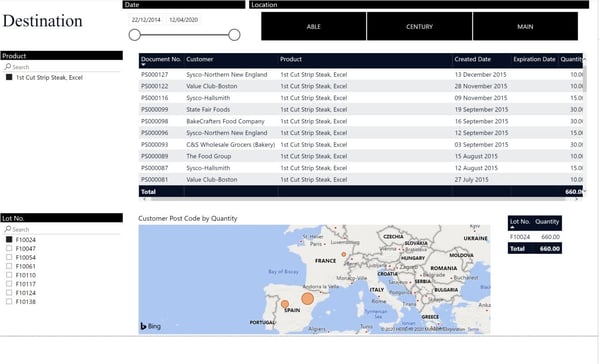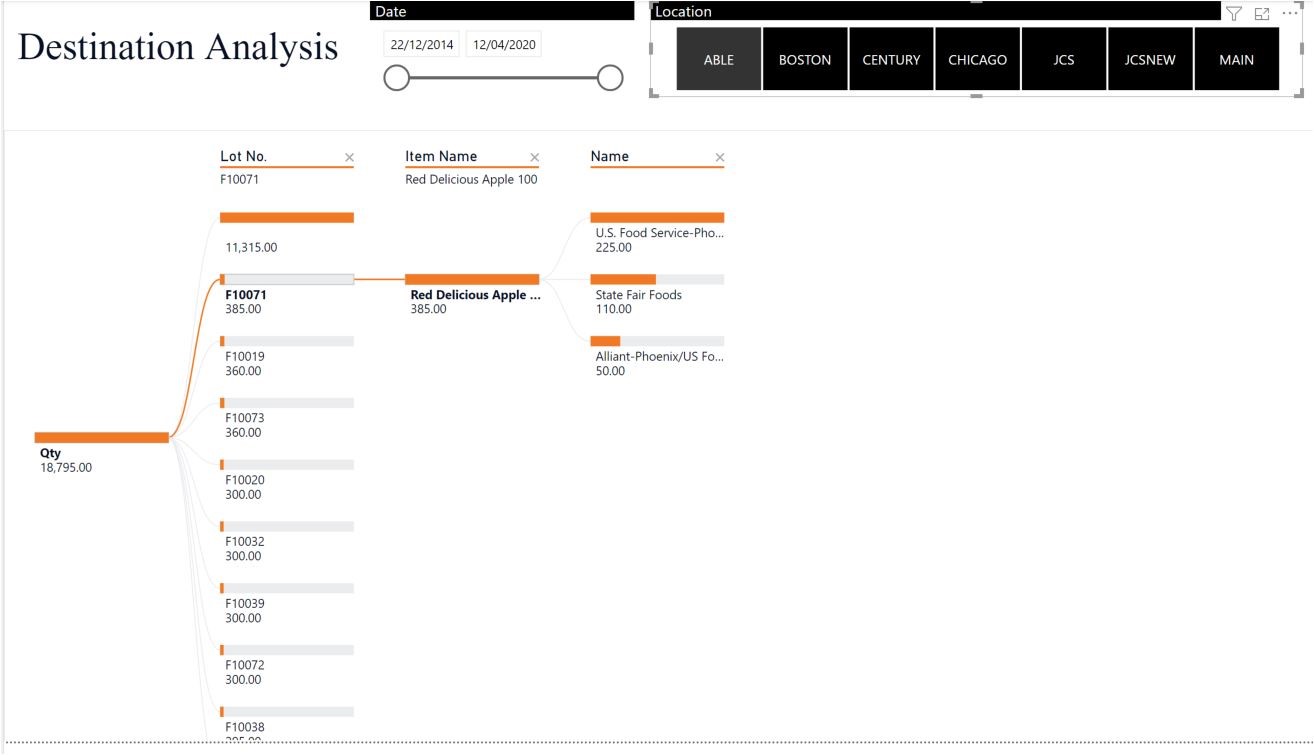There is an increasing responsibility on food manufacturers to gain complete traceability of all the supplies, ingredients, materials and finished products throughout the supply chain.
By having full visibility of the entire lifecycle of all products and product components, from production to the point of consumption, means that in the event of a quality concern the relevant actions can be taken quickly and efficiently to either contain or recall ‘at-risk’ products.
Improved traceability can be readily achieved through the implementation of food focused solutions such as ERP, but these can require a large investment and time to implement, and certainly cannot provide a short-term solution.
Reliance on purely recording details in a spreadsheet or on paper, means traceability becomes a rather time-consuming and error ridden process. This can lead to a “recall it all” approach because its faster and safer, but incurs a higher direct cost.
However, there is thankfully an approach that can improve traceability using tools such as Power BI which can collate and display information from a variety of data sources, and doesn’t require substantial time and money to implement, providing a very realistic short-term solution to the issue of Food traceability which can make a significant difference.
What is Power BI?
Power BI is a tool from Microsoft which is rich in features and designed to create intelligent visualisations based on business data, supporting you in your decision-making processes. Power BI Pro provides the ability to create graphical data visualisations, in both independent or collaborative environments, which can then be shared between employees.
How can Power BI help you?

Power BI can provide the ability to manage data storage from a variety of sources and enable cleansing, joining and merging of sources such as spreadsheets. In essence, it doesn’t matter where the data comes from providing it exists, and if it exists, it can be extracted using items such as standard connectors where applicable.
This then provides rapid information breakdown and enables easy access to understandable data which means your Power BI users can quickly and easily make increasingly informed decisions in relation to business needs. So, if you retain data relating to ingredients, batch IDs, locations, delivery addresses etc, you should be able to easily analyse and filter information accordingly to determine for example the extent of use and coverage associated with a particular batch of ingredients.
These analysis reports can be created and customised to suit your business’s needs, via natural language queries rather than complex query coding reducing any learning time for users.
They can also be run on a variety of devices which means you’re not reliant on being on your desktop or in the office to access relevant information and make decisions.
As a result, it provides a solution to analyse relevant data, which can be applied even to smaller scale businesses and enables a single tool to be used for data analysis rather than multiple separate solutions.
How do I start?
- Identify data sources
The starting point initially requires time to validate sources of data and identify any cleansing required to ensure data integrity. This time should be focused on the data needed to support traceability evaluation. - Determine required outputs
The next step should be on the what the outputs need to be in the form of standard reports, ad-hoc reports, drill-downs and queries, alerts etc.. Proof of Concept (PoC) outputs can then be created where required, using a subset of the data, so that you can see what the end result would look like and ensure it meets expectations before the full set-up occurs. - Train your users
Training is also key in terms of how to use Power BI, so that the customer is not solely reliant on the supplier and is then able to amend or adjust as needed. - Manage compliance
Finally, compliance and GDPR also need consideration with regards to data classification from a GDPR perspective and any other compliance requirements. Security, similarly, is also a key step when it comes to determining who can have access to relevant data sources and outputs.
Support for doing this can be achieved using a partner to assist where needed... Ask yourself the following questions:
- Should these reports be built in house or should you engage a partner to create these for you?
- Should you create these internally and will you require training?
Consider the timeline vs cost. It may be that initially you use a partner to create the reports on your behalf, then arrange training for your key employees going forward so your reports are created internally.
The approach can be flexible!
Whichever path you decide to take, you will also need the following:
- Power BI account
- Power BI Pro Trial Licence
- Power BI Desktop
Only once you have these in place can you begin.
How can I link Power BI to traceability?
If you capture the relevant information regarding attributes, batches, products, Customers etc.. then you have the ability via Power BI to collate and report on the relevant information which could be accessed and filtered quickly in the event of a potential quality issue arising.
This enables the extent of any issue to be quickly evaluated and appropriate action taken. The example below shows what can be achieved in a very short period of time.

Defining and implementing an Analytics and Business Intelligence project can happen in a relatively short period of time, and at Columbus we have the industry expertise and the scale to get your ideas off the ground and turn them into reality quickly, using our flexible, rapid approach. Take a look at one of our case studies here!
So, if you need to find a quick route to solving your existing traceability needs and managing the potential impact of any quality issue more effectively then reach out to us here and find out how you can get started.

